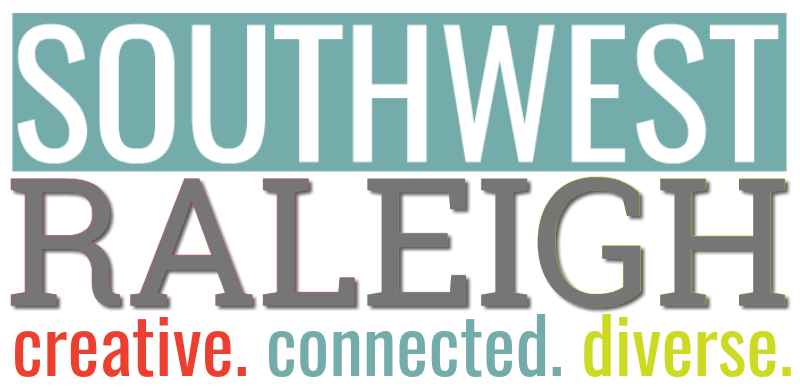 On April 16th, our city was devastated by a tornado that touched down in eight places. An editorial in The Independent called Raleigh the “City of Fallen Oaks.” That’s what I saw, along with destroyed and seriously damaged homes, businesses, universities, parks, greenways, cemeteries – everything in the storm’s straight-line path. I felt the anguish of families and the community that lost four young children, as well as the families and business owners whose lives were upended. Southwest Raleigh’s neighborhoods and businesses experienced destruction first hand.
On April 16th, our city was devastated by a tornado that touched down in eight places. An editorial in The Independent called Raleigh the “City of Fallen Oaks.” That’s what I saw, along with destroyed and seriously damaged homes, businesses, universities, parks, greenways, cemeteries – everything in the storm’s straight-line path. I felt the anguish of families and the community that lost four young children, as well as the families and business owners whose lives were upended. Southwest Raleigh’s neighborhoods and businesses experienced destruction first hand.
Along with all this, I also witnessed the true spirit of humanity.
On Monday, April 18, our department mobilized to coordinate donations and organize volunteers and clean-up efforts. Within hours, hundreds of people in Raleigh and Wake County had signed up on our online volunteer registry. (Eventually, well over 1,000 registered as volunteers.) This registration process relieved the Red Cross phone lines of hundreds of calls from potential volunteers, which was making it nearly impossible for storm victims to get through to request assistance.
While our Community Services team planned a large-scale volunteer cleanup, Community Specialist Jonathan Edwards and I were in the Emergency Operations Center, coordinating our response with the Public Works, Parks and Recreation, and Police departments. We also identified neighborhoods where downed power lines were disabled and streets and rights-of-way were clear and thus were safe for volunteers. In short time, Jonathan found organizations to donate gloves, safety vests, protective eye wear, water, snacks, bug spray, hand sanitizer, and lunch for more than 200 volunteers. Thanks to Home Depot, Wal-Mart, Lowes Foods, and the Inter-Faith Food Shuttle, we had the supplies needed for the first cleanup.
That afternoon, we learned we had clearance to send volunteers to the South Park neighborhood near Shaw University. Parks and Recreation allowed us to set up staging site at Chavis Community Center, which provided ample parking, bathrooms, drinking fountains, shelter and on-site community center staff and was in walking distance to the cleanup area.
To spread the word about the cleanup, we alerted the chair of the Central Citizens Advisory Council and sent out a mass email to registered volunteers, CAC members, Neighborhood Registry listservs, and City departments. We announced the cleanup in a news release and on Facebook, Twitter, and the City of Raleigh website. Citizens forwarded our emails and shared our Twitter and Facebook posts.
The next morning, more than 200 volunteers showed up at the community center for what turned out to be the first in a series of large-scale cleanups. Among the volunteers: people who had experienced the devastation of Hurricane Fran in 1996 and wanted to help others in need; retirees; teens and their parents; unemployed folks; students; employees of businesses that had lost electricity and thus were unable to work; residents of the Healing Place; and teachers on spring break. In other words, the volunteers represented every walk of life and every part of Raleigh. Wearing bright orange safety vests and work gloves, they moved in teams through South Park, carting fallen branches and other debris to the curb for later pickup. It was a hot day, and this was not easy work.
But here is the amazing thing. Over and over, the volunteers thanked us for giving them a way to help. On this day and in the days to come, in person and through email and phone calls, volunteers kept telling us how much they appreciated the chance to serve others.
“I am so glad I had the opportunity to help out!” one woman wrote in an email that was typical of the messages we received. “It made me feel really good to help those that needed help. Thanks for helping coordinate all of the volunteers. … Let me know if you have further need of help!”
Two weeks after the storm, with poignant if unintended timeliness, our department sponsored an appearance by author Peter Lovenheim, who wrote a book that explored the meaning of neighborliness. Lovenheim believes that people are wired to help each other and that by helping, we feed a biologically based need to feel a connection to others. He talked about how natural disasters spur people to act on that need — but he stressed that we shouldn’t wait for a tragedy to reach out to each other as neighbors.
I agree, and I would like to hear your ideas on this. What have you done or what are you going to do to kindle a connection among your neighbors? How will you keep the neighborly spirit alive long after our city has recovered from the storm of April 16?
